Here are some maps i have put together that show the accumulated aftershocks from the M 6.8 Gorda plate earthquake on Sunday night. There was one M 3.3 earthquake less than 30 minutes before the main shock. I draw the general location for possible earthquake faults related to the earthquakes from the last couple of days.
The faults I have drawn are located in a general manner and more detailed seismological analyses would need to be conducted in order to further justify my general interpretations. The lack of aftershocks along the possible northwest striking main shock fault is strong evidence that the main shock was along a northeast striking fault. I present my reasoning below. Please look at my first page about this earthquake swarm for a couple of models of the local tectonics in this region.
Here is a local map showing the earthquake epicenters. The moment tensor is shown for the main shock (the M 6.8 earthquake). The main shock epicenter is designated by a red circle.
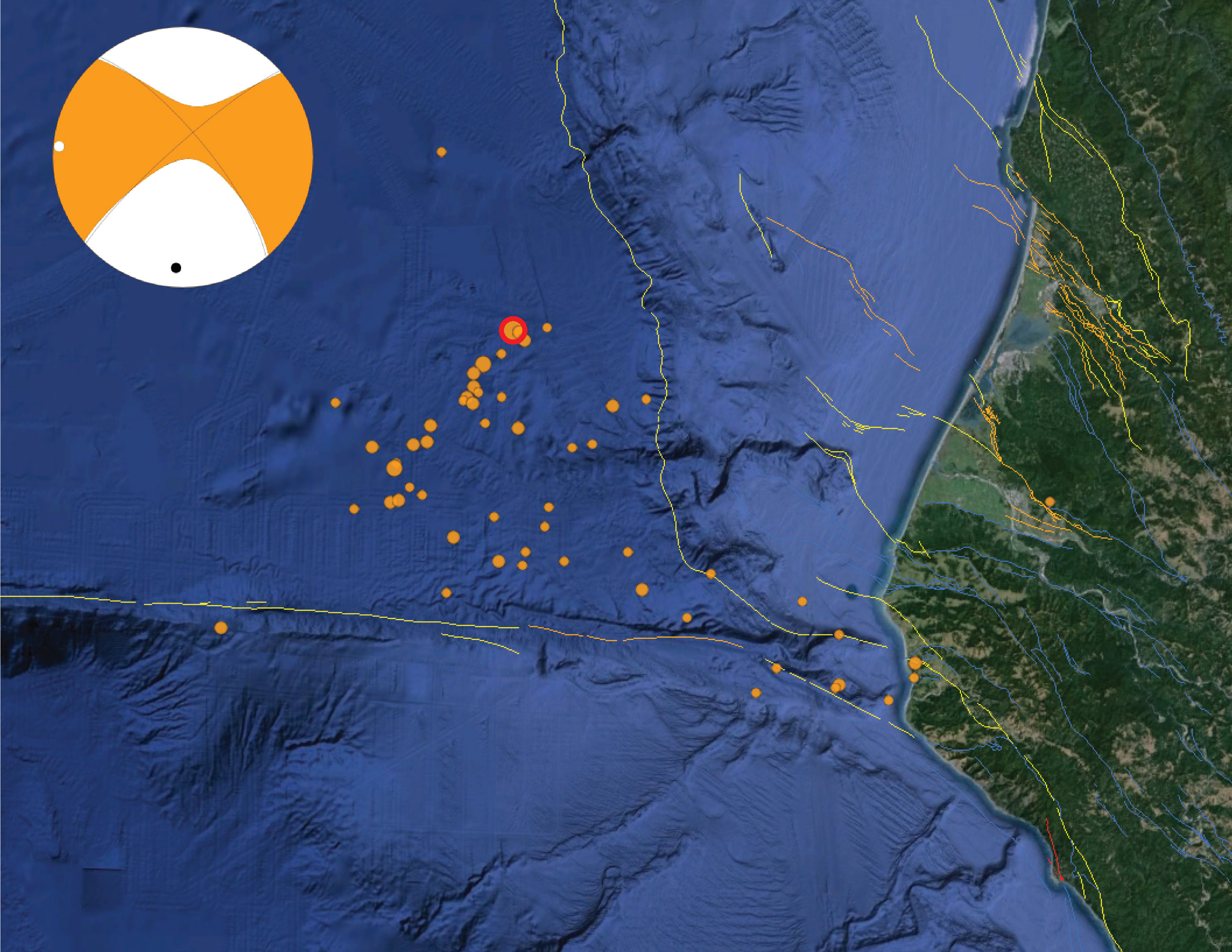
Here I have placed a red line that is one possible general location for the earthquake fault that ruptured during the main shock. This possible fault aligns nicely with some of the aftershocks (which supports that the main shock was likely a northeast striking strike-slip fault). The strike of a fault is the compass orientation of the line that is formed by the intersection of the fault plane and the surface of the Earth.
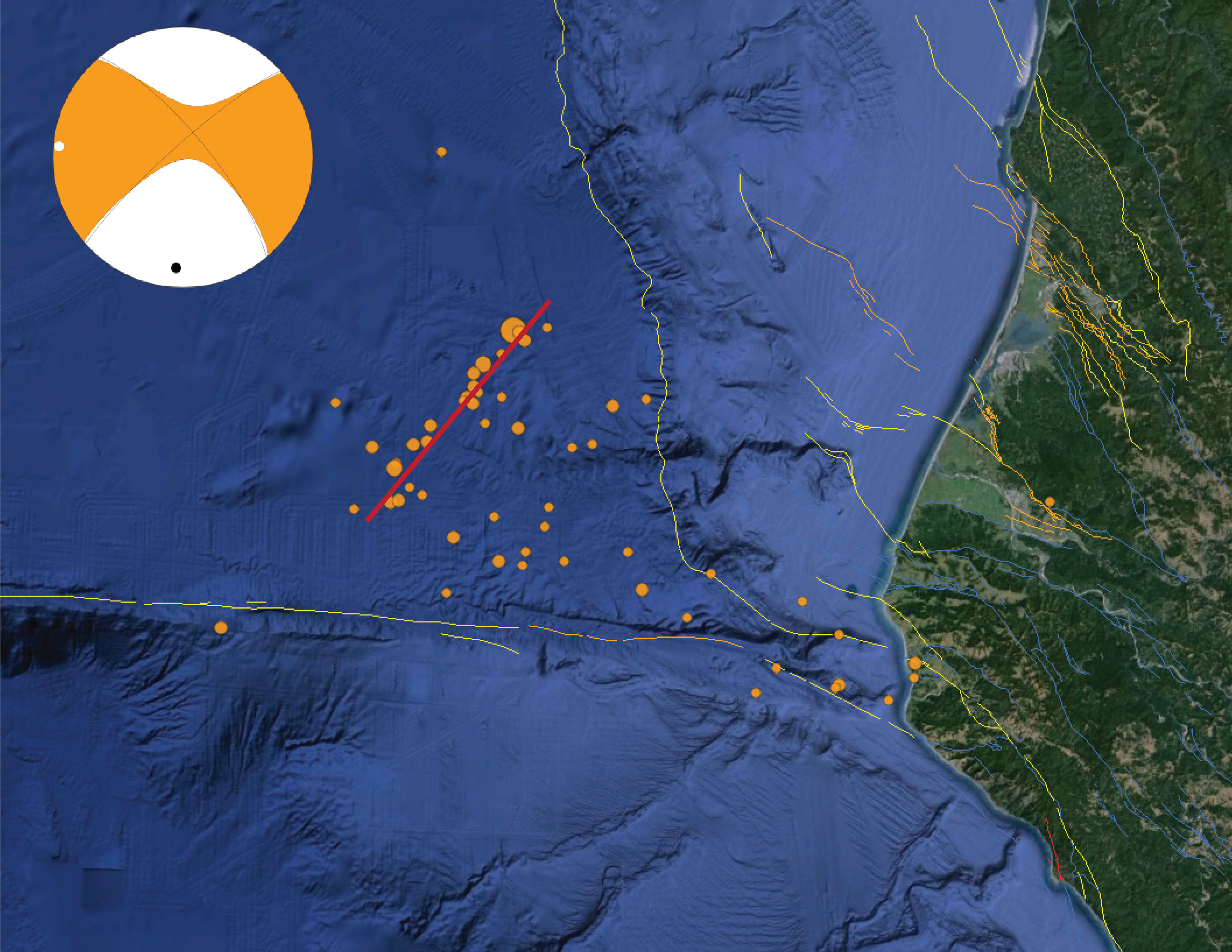
Here is a map where I have placed a second alternative possible fault for the mainshock. The strike of this fault is aligned with the second possible fault orientation based on the moment tensor. We can observe there are not many aftershocks that align with the orientation of this possible fault. This observation supports the hypothesis that the green fault is likely NOT the orientation of the fault for the main shock (the M 6.8 earthquake).
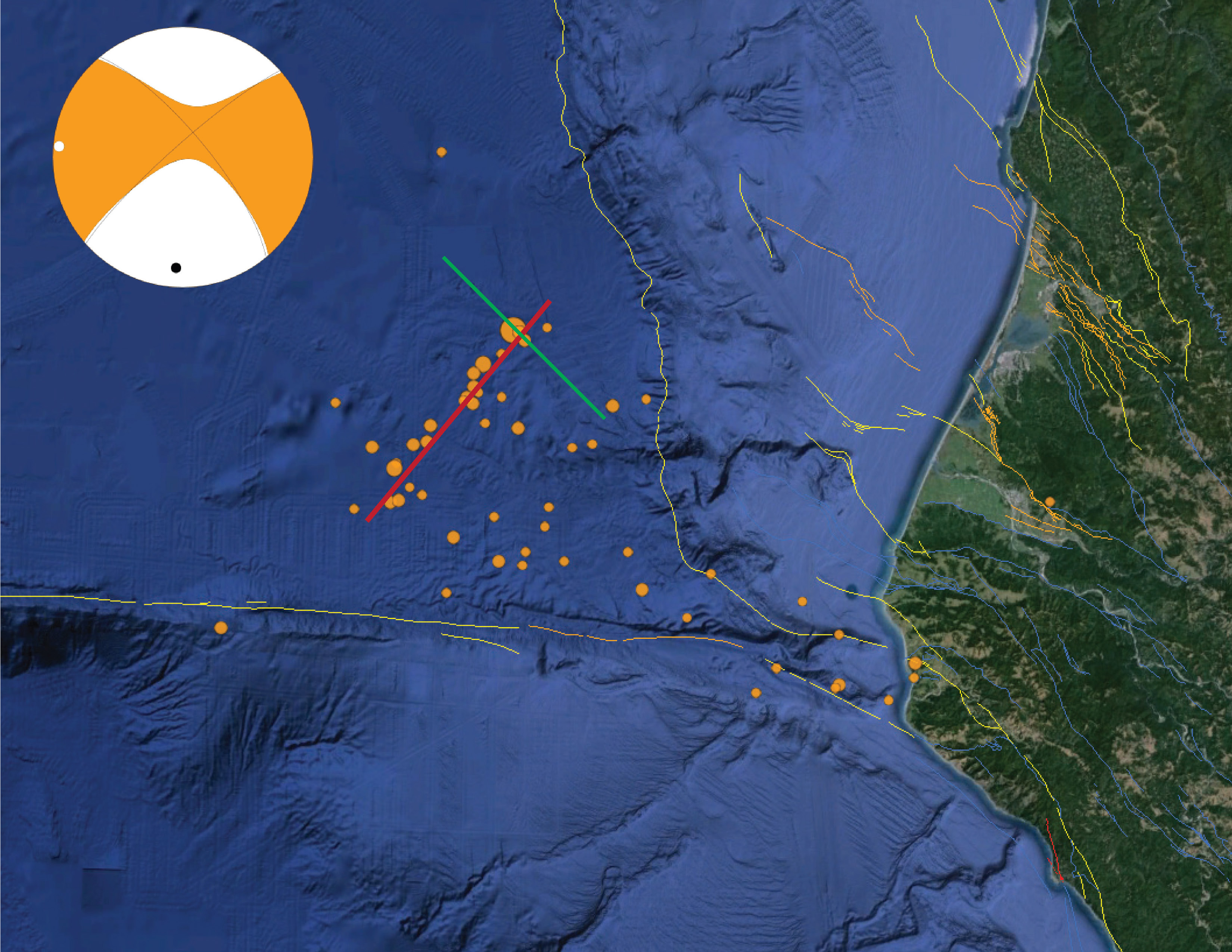
Here is a map where I have placed a blue line oriented along some aftershock epicenters. These earthquakes are not really aftershocks since they are on different faults. Some people still call them aftershocks (no biggie), while others might call them triggered earthquakes. This blue line possible fault is parallel to the main shock fault.

There are many historic examples of large earthquakes triggering other earthquakes on faults with antithetic orientations (not parallel). For this map, I have placed two possible antithetic faults (in green) that triggered earthquakes may be located on. Some aftershocks align with these possible fault orientations.
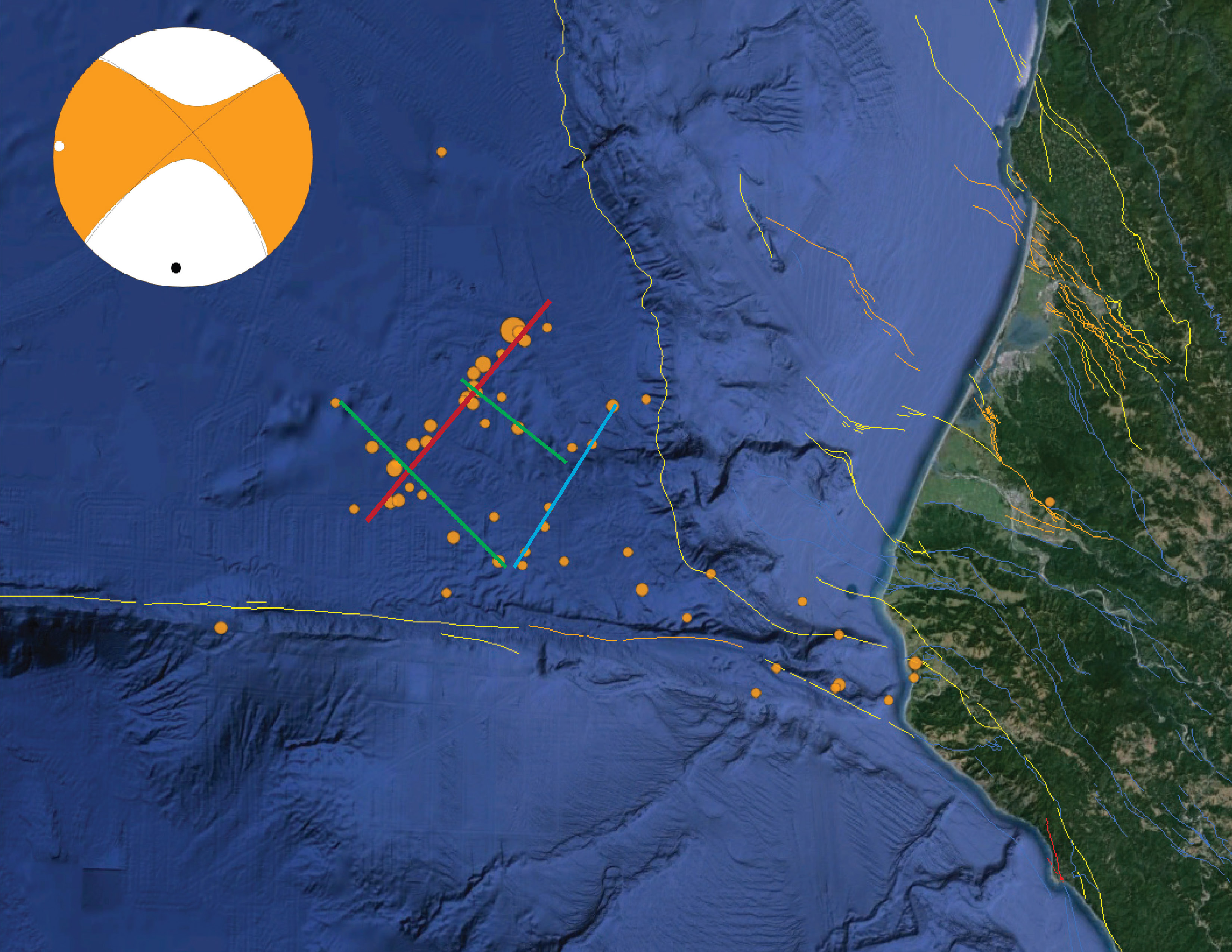
Here is the same map with just the recent epicenters (like the first map), along with select historic earthquakes fed from the USGS.
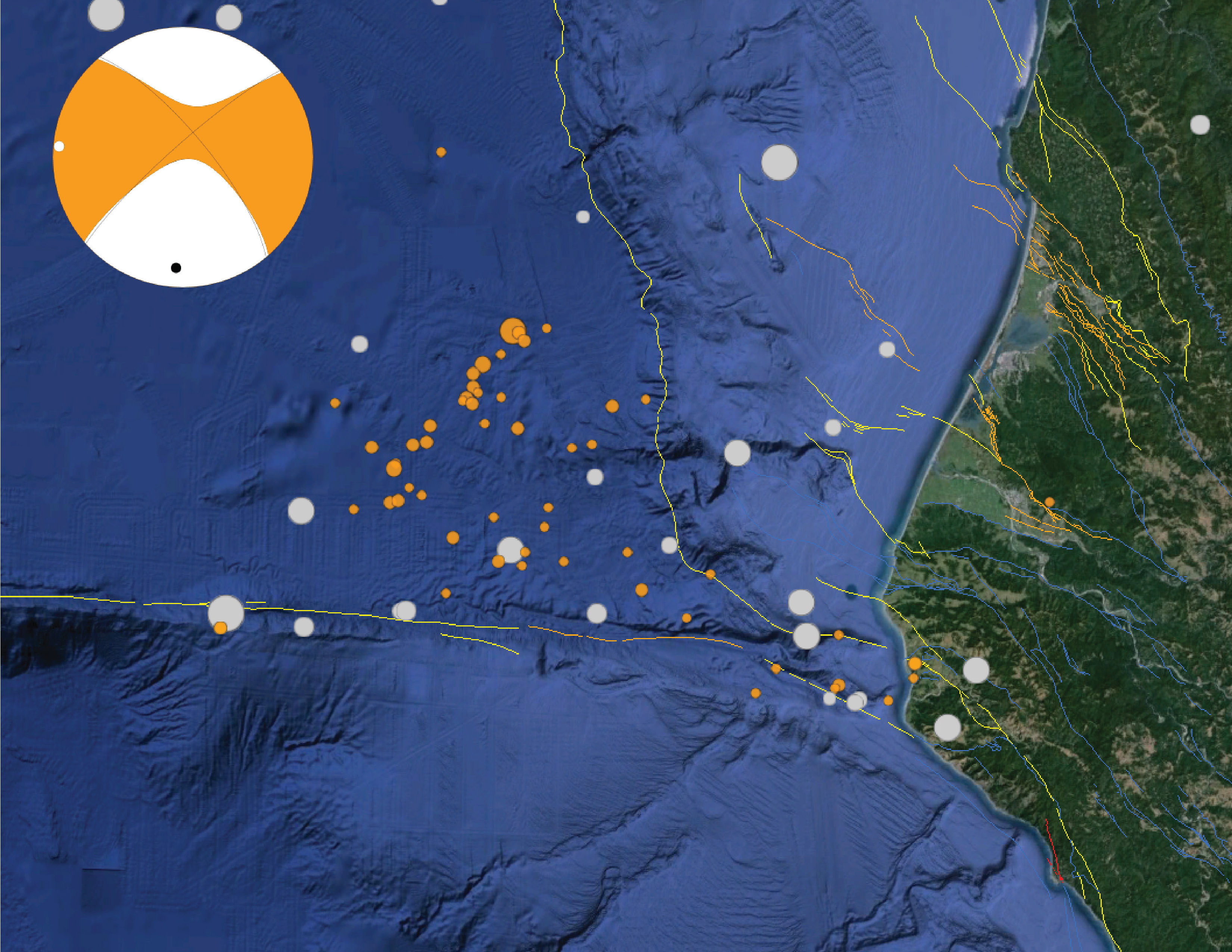
Thanks Jay you make it understandable!